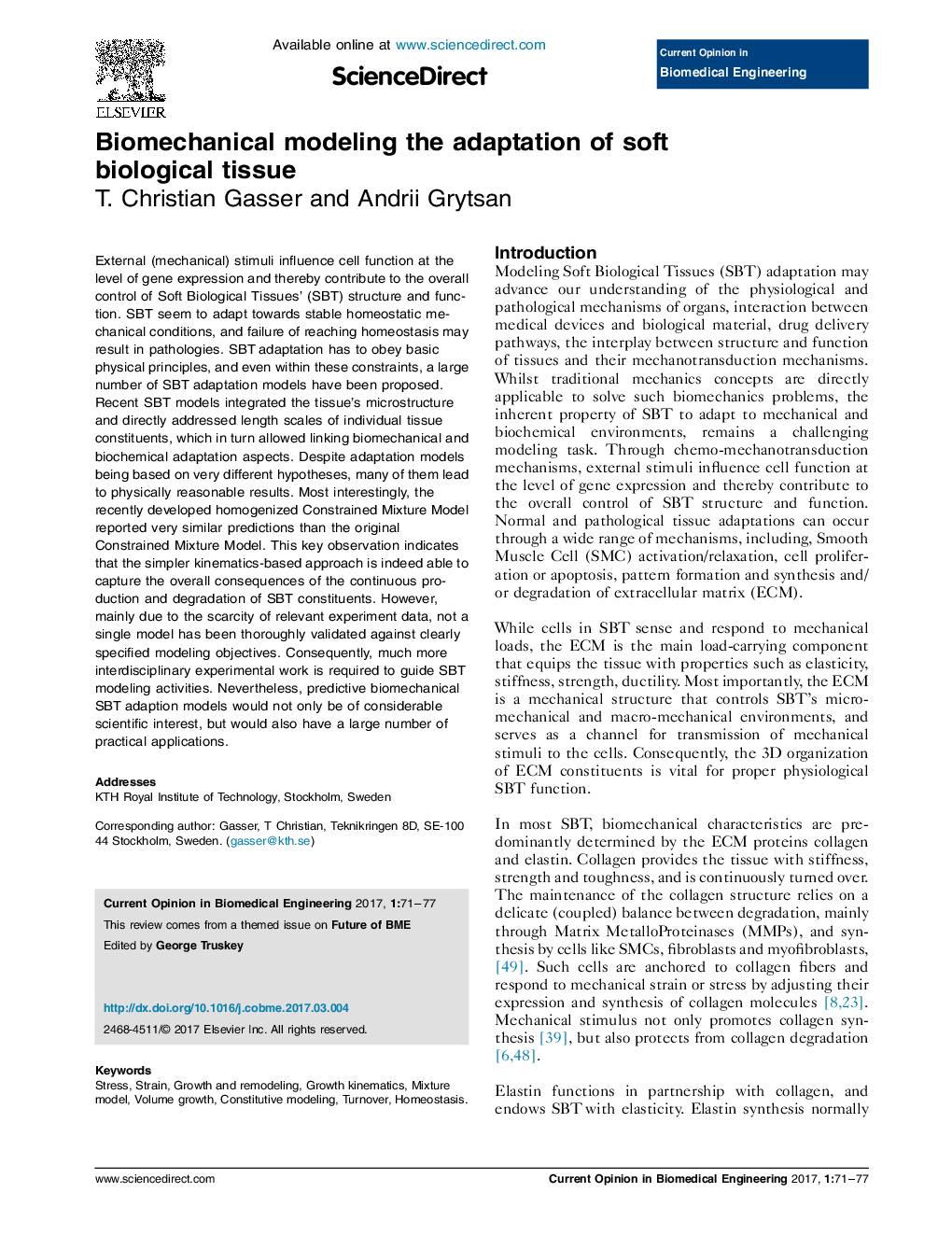| کد مقاله | کد نشریه | سال انتشار | مقاله انگلیسی | نسخه تمام متن |
|---|---|---|---|---|
| 8919065 | 1642868 | 2017 | 7 صفحه PDF | دانلود رایگان |
عنوان انگلیسی مقاله ISI
Biomechanical modeling the adaptation of soft biological tissue
ترجمه فارسی عنوان
مدل سازی بیومکانیک سازگاری بافت بیولوژیکی نرم
دانلود مقاله + سفارش ترجمه
دانلود مقاله ISI انگلیسی
رایگان برای ایرانیان
کلمات کلیدی
فشار، نژاد، رشد و بازسازی، سینماتیک رشد، مدل مخلوط، رشد حجم، مدل سازی پایه، حجم معاملات، هوموستوزیس،
موضوعات مرتبط
مهندسی و علوم پایه
سایر رشته های مهندسی
مهندسی پزشکی
چکیده انگلیسی
External (mechanical) stimuli influence cell function at the level of gene expression and thereby contribute to the overall control of Soft Biological Tissues' (SBT) structure and function. SBT seem to adapt towards stable homeostatic mechanical conditions, and failure of reaching homeostasis may result in pathologies. SBT adaptation has to obey basic physical principles, and even within these constraints, a large number of SBT adaptation models have been proposed. Recent SBT models integrated the tissue's microstructure and directly addressed length scales of individual tissue constituents, which in turn allowed linking biomechanical and biochemical adaptation aspects. Despite adaptation models being based on very different hypotheses, many of them lead to physically reasonable results. Most interestingly, the recently developed homogenized Constrained Mixture Model reported very similar predictions than the original Constrained Mixture Model. This key observation indicates that the simpler kinematics-based approach is indeed able to capture the overall consequences of the continuous production and degradation of SBT constituents. However, mainly due to the scarcity of relevant experiment data, not a single model has been thoroughly validated against clearly specified modeling objectives. Consequently, much more interdisciplinary experimental work is required to guide SBT modeling activities. Nevertheless, predictive biomechanical SBT adaption models would not only be of considerable scientific interest, but would also have a large number of practical applications.
ناشر
Database: Elsevier - ScienceDirect (ساینس دایرکت)
Journal: Current Opinion in Biomedical Engineering - Volume 1, March 2017, Pages 71-77
Journal: Current Opinion in Biomedical Engineering - Volume 1, March 2017, Pages 71-77
نویسندگان
T. Christian Gasser, Andrii Grytsan,
